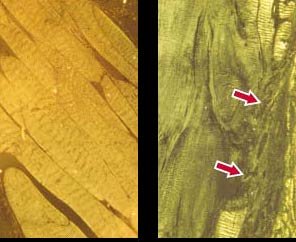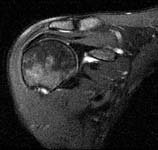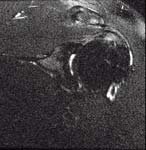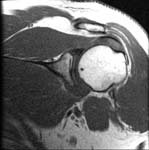[COLOR=#D4D4D4 !important]If you have had tendon pain for a period of time longer than two weeks, you should be very aware that it is not likely tendonitis. That's right. And if you would like to know more about tendonitis and tendonosis, then read on...[/COLOR]
By: Dr. David Ryan
This may be the single most important article you will ever read. You are very likely to develop a tendon problem if you lift weights. You currently are more likely to be diagnosed wrong by a physician about that tendon problem. Your whole lifting career can be ended because of an improper treatment plan. ARE YOU WILLNG TO TAKE THAT RISK?
The tendon is a very dense/fibrous tissue that is formed from the connective tissue of the muscle. It allows for a very sturdy attachment to the bone. It is this tough nature that brings about an obvious problem. It heals very slowly once it is injured. If you rupture it, surgery is your only option.
If you have had tendon pain for a period of time longer than two weeks, you should be very aware that it is not likely tendonitis. That's right; your doctor may have told you for the past two years that your problem is an inflammatory condition requiring you to take NSAIDs (Non Steroidal Anti-Inflammatory Drugs) like they are candy to a child on Halloween.
You can be doing even more damage by following that dangerous course of treatment. Dangerous? Yes, because not only are you causing more injury to the injured tendon, the fact is that over 16,000 people die every year from taking Advil, Aleve, Nuprin, Aspirin, etc. They eat away at your stomach and your lining of your heart and kill you.
Now we have your attention!
Tendonitis Vs. Tendonosis
Tendonitis is actually very rare; the tendon is more likely to have a condition known as tendonosis. It may look like the same word, but it is very different and if you are confused at this point, then you understand why most doctors are lost too.
Tendonosis is a degenerative condition that is treated completely different from its inflammatory misnomer, tendonitis. The -itis is a suffix that means inflammation. We could go on about this all day- Take a look at the table below to grasp a comparison of the two conditions.
| Table 1. Comparing Tendonosis To Tendonitis |
| Tendonosis | Tendonitis | | Very Common | Very Rare | | Requires months/years to heal | Requires only 14 days to heal | | Treated with therapeutic exercise | Aggravated by exercise | | Irritated by NSAIDs | Helped by NSAIDs | | Shows up Black on a MRI (T1) | Shows up White on an MRI | | Degenerative | Inflammatory | | Usually feels better after proper training | Hurts to move at all | | Responds to Electric stimulation and heat | Irritated by heat | | Irritated by Ice and rest | Loves rest and ice | | Helped by friction massage | No friction massage | | Most not helped by surgery | No help from surgery | | Usually cool to touch | Usually warm to touch |
<tbody>
</tbody> |
<tbody>
</tbody>
Radiological diagnosis of a tendinopathy is best from a MR that is .7Tesla or higher. Just ask what power magnet they use when you are scheduling your visit. Closed MR is better than Open MR and you can ask that too. Most Radiologists will not say that it is tendonosis or tendonitis, they usually call it tendinopathy.
Nutritionally
Specifically proanthocyanidins (grape seed) that have been suggested to prevent activation of metalloproteases, decrease free-radical production and stabilize proteins. There hasn't been much work done in humans with proanthocyanidins so there isn't much out there. I'm thinking about 500 - 1000 mg/d to begin. Most of the capsules contain about 100 mg (Nature's Way).
Training For Treatment
Consider using this approach only after confirming your proper diagnosis with your doctor. Tendon Pathology includes but is not limited to: tendonosis/ tendinopathy, tenosynovitis and peritendonosis, partial and complete tears, subluxation and dislocation, and entrapment. The proper diagnosis is critical to determine your treatment success.
The treatment for tendonosis requires a varied step approach.
First:
- Find what area of the movement is affected by pain. Typically tendonosis does not limit your range of motion, except with pain. This means that if your lifting buddy can gently move the joint, then it shouldn't hurt as bad, as long are you are relaxed. You must find out what movement causes you pain.
Second:
- This is to warm-up. We are going to work on the area where the movement doesn't hurt. Now let's say that the painful part of the curl is the part at the very bottom or the bench hurts when the bar is close to your chest.
You should warm-up using less weight (less than 20% of max). Perform 30-40 reps with a slow speed. If it hurts to move anything, use Isometric contractions and use six different positions in the range of motion, for 6 seconds at 60% of your max for squeezing the muscle, then repeat it 6 times.
<form>
| 1RM CACLULATOR |
| [FONT=Arial, Helvetica, sans-serif]Weight Lifted |
<tbody> |
<tbody> |
<tbody>
<input size="5" name="WeightLifted" style="color: rgb(51, 51, 51);">
[FONT=Arial, Helvetica, sans-serif]Reps (1-10)[/FONT] <input size="5" name="RepsPerformed" style="color: rgb(51, 51, 51);">
[FONT=Arial, Helvetica, sans-serif]<input value="Calculate" name="button" type="button" style="color: rgb(51, 51, 51);"> <input value="Reset" name="Reset" type="reset" style="color: rgb(51, 51, 51);">[/FONT] |
</tbody> | [FONT=Arial, Helvetica, sans-serif]<input size="5" name="OneRepMax" style="color: rgb(51, 51, 51);"> One-Rep Max[/FONT]<dl style="font-size: 16px;"><dt>[FONT=Arial, Helvetica, sans-serif]<input size="5" name="E" style="color: rgb(51, 51, 51);"> 20% 1 RM[/FONT]</dt><dt>[FONT=Arial, Helvetica, sans-serif]<input size="5" name="G" style="color: rgb(51, 51, 51);"> 60% 1 RM[/FONT]</dt></dl> |
</tbody> |
</tbody> </form>
Third:
- Please note; that this part is likely to cause pain, but not more than 60% or a 6/10. Ten is like Emergency room pain. Using the lighter weight still, enter into that painful range of motion. Do 30-40 reps with a slow speed. Do only one set the first day. Two the next and three the following and then move to the next step.
Fourth:
- Instead of lifting more weight, try to move the weight faster. You might need to alter your lifting style here and go to using bands. Day one; do the movement for 30-40 seconds, day two do 50-60 seconds. Over the course of the next couple of days use a friend to count the number of movements. Try to move faster and faster, until you are moving stupid fast.
Training the knees and shoulders might require special machines known as: Orthotrons, available at your local physical therapist, some chiropractic offices and some other specialty physician's clinics.
Fifth:
- The next step is to slow down the movement again by 50% and increase the weight by 1-10%. Again, keep in mind that maximum pain is 60% and that speed helps this condition, not heavy weight.
Sixth:

- You will also note that the Weider pyramid principle is quite effective here. Begin your group of sets with increased speed and lighter weights more reps. Progress onto sets with heavier weight, slower speed and less reps. Finish by returning to the faster speed, lighter weight and higher reps.
Continue to raise the weight on the lower rep sets until you have obtained 80% of your original strength or that of the opposite healthy side.
As your speed increases, you should note a decrease in pain. During this rehabilitation protocol you will have to back up to a previous step several times.
You can train more often, since you are at sub-maximal levels. It is like jogging everyday, you need to rest, but under most conditions you can recover quickly.
As time goes on, you will be able to return to your pre-injury weight. You will also need to consider that at least once or twice a month, you will need to use speed training/plyometics to stimulate your tendons to thicken and promote proper collateral circulation around them. Have a great workout.

Tendonosis Rehab Summary
- Determine the painful movements.
- Warm the area up with lighter weights/slower movements.
- Train the painful motion using lighter weights/slow movements at first, then progressing to faster and faster movements.
- Train at speeds to complete a movement at very high speeds for time intervals of 15, 30, 45, 60 seconds. Special equipment may be required or use of therapy bands.
- Reduce the speed and use more weight (1-10%) still maintaining a slower speed at first, and then progressing to a higher speed. Use the Weider pyramid principle to include speed sets with heavier sets.
There are better choices for exercises depending on your particular injury. Trial and error is the best way to determine which are best for your program.
| Example Of Bench Pressing For Max 150lb Bench Press |
| Set # | Protocol | Weight (lbs) | | 1 | 15 seconds = 30 reps high speed | 45 | | 2 | 30 seconds = 60 reps high speed | 45 | | 3 | 15 reps /2 seconds each way | 50 | | 4 | 10 reps /2 seconds each way | 60 | | 5 | 45 seconds = 70 reps high speed | 45 | | 6 | 60 seconds= 100 reps high speed | 45 |
<tbody>
</tbody> |
<tbody>
</tbody> |


































